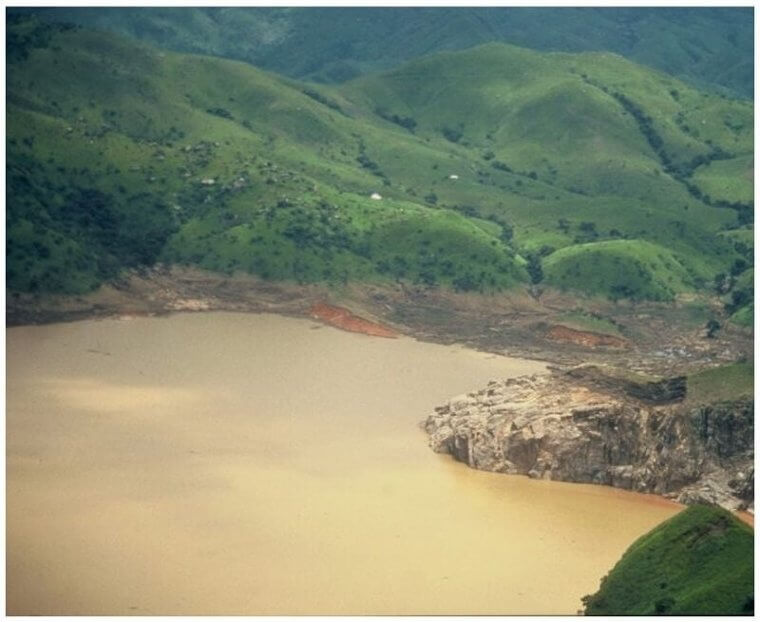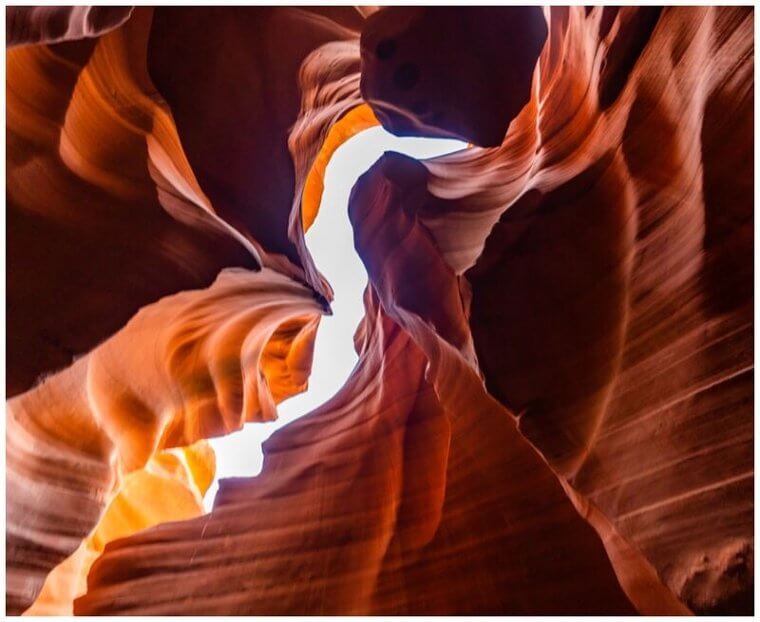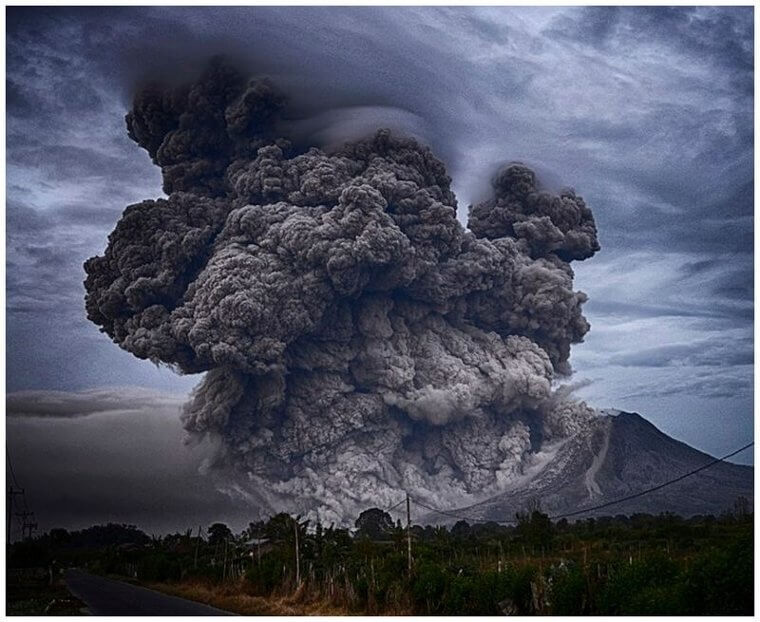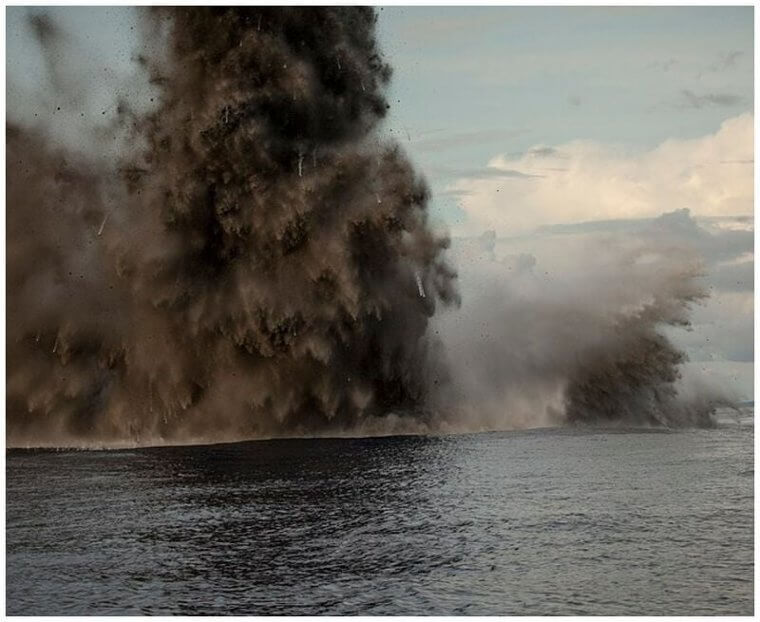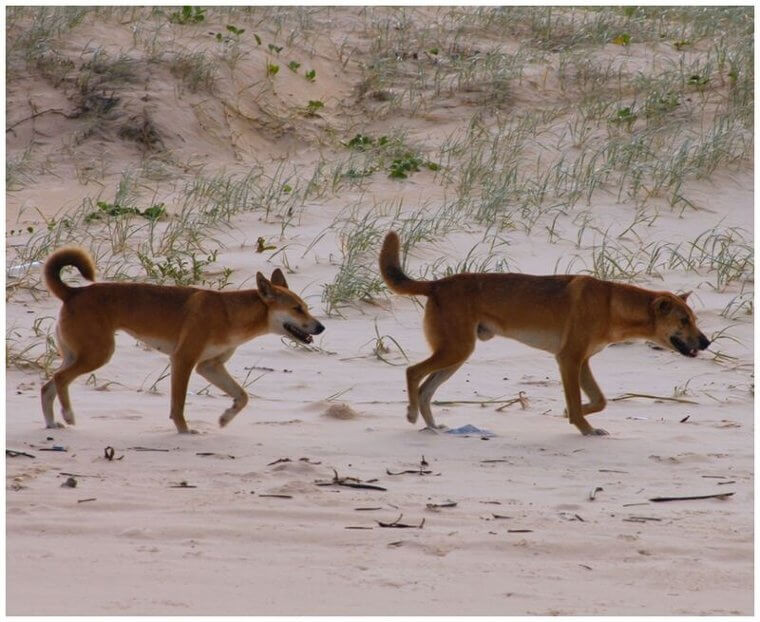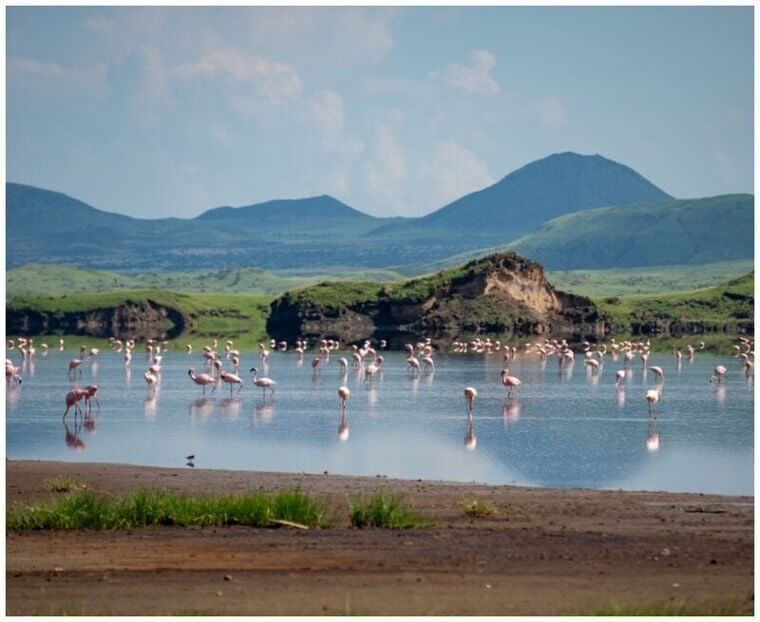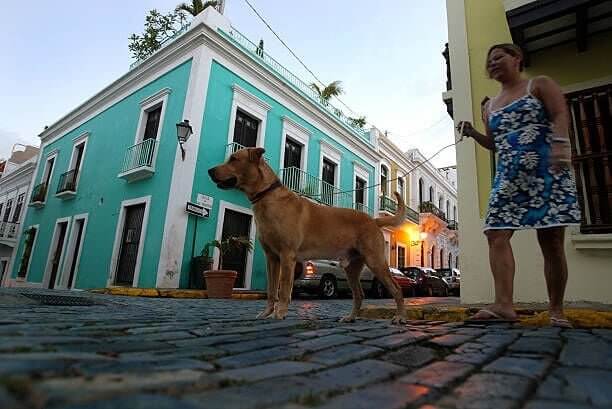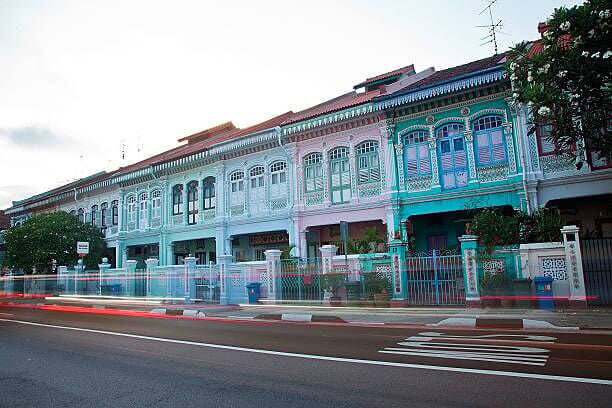There are a lot of dangerous places on our home planet, with the danger level determined by several factors; exposure to natural disasters, the stability of the governments, violent crime rates, or the presence of harmful animals and plants. These are the most dangerous places in the world.
Perilous Sun, Sand and Sea
Los Cobos in Mexico was once the go-to destination for many tourists, owing to the fact that it has stunning beaches and great views. Yet, this has changed in recent years, with cartel violence prevailing in the area. It got worse in December 2017 when the police launched an investigation after the demise of six men whose remains were hanged on highway overpasses.
That's pretty scary for anyone, and with the rise of transgressions in the city, it now holds the record for the most dangerous beach town in the world. Not what you'd think about when you say you're going to enjoy some sun, sand, and sea.
God's Fascinating Angry Creation
When taking a walk down the dunes of Namibia's Skeleton Coast, you'll be met with countless bones, which make for an eerie sight, especially considering that the area rarely receives any rain. Still, the place boasts high waves that are famous among thrill-seeking surfers who'd like to experience the site where the sea meets the desert.
Aptly named by locals "The Land God Made in Anger," the coast was a blackspot for ships as they'd always sink, and it's now riddled with whale bones and rusting shipwrecks. We're not sure how much fun you can have when you're down at the Skeleton Coast, but if you're a surfer, you can try the waves.
The Dark Blue Hole
Blue holes are deep marine cavities or sinkholes with concave surfaces through which one can access submerged caves. Most blue holes are massively deep, and the Blue Hole of Dahab in Egypt is one of the biggest in the world and certainly one of the most dangerous.
The blue hole is about 120 meters deep, making it a go-to place for daredevil divers who love to explore the depths of the sea. Yet, the spot holds some dark numbers, with an estimated 200 divers meeting their demise within its depths.
Death Road
North Yungas Road in Bolivia is known as Death Road due to the fact that around 300 drivers were killed there every year until 1994. With cliffs that drop 2,000 feet, North Yungas Road attracts thousands of tourists every year.
The road connects the Amazon rainforest to the capital city, La Paz, and it has been renovated since the 90s to make it safer, but still, every year, cyclists, tourists, and locals continue to meet their end on Death Road.
The Leaking Lake Nyos
Lake Nyos in Cameroon is one of the most famous exploding lakes in the world. It sits on a layer of magma and is flanked on one side by an inactive volcano. The magma releases carbon dioxide, which turns the water into carbonic acid, and while the gas is mainly stable, sometimes, due to an earthquake or landslide, it can be released in large quantities.
In 1986, a catastrophe occurred when the lake released a massive cloud of carbon dioxide due to a limnic eruption. The gas pushed out the air in the surrounding 25 kilometers, depriving the area of oxygen. About 1,746 people and 3,500 livestock suffocated from the CO2. Over the years since the tragedy, degassing pipes have been installed to avoid it from happening again, but a weakening volcanic wall puts the area at risk.
Floods in an Instant
The Navajo area in Arizona holds one of the most beautiful canyons in the world, the Antelope Canyon, which was an erosion created by flash floods. Visitors throng the canyon to experience the atypical, stunning rock formations, but not without any risk. Tourists must access the canyon under the guidance of a trained tour guide because of the danger of flash floods.
Named by the Navajo people "the place where the water runs through the rocks," Antelope Canyon claimed the lives of eleven tourists in 1997 when a flash flood occurred. Since then, bolted ladder systems have been installed, which have helped avoid such disasters. In 2010, numerous visitors were trapped in flash floods, but luckily, there were no casualties.
Lethal Albeit Stunning Landscape
The Amazon rainforest is one of the greatest ecological marvels and holds millions of animal and plant species. Located on the shores of the Amazon River and deep in the middle of the forest is Manaus city, which is isolated and can only be accessed by plane or boat.
While the Brazilian city serves as a protection for the extensive flora and fauna, it's also quite dangerous, as it's home to anacondas, poisonous spiders, sharks, and electric eels. Going there, you have to be prepared and careful, or you might never be able to leave that place.
Literal Hell on Earth
The Darvaza gas crater is a natural gas field located in Turkmenistan. Deftly named the "Door to Hell," or "Gates of Hell," the cavern was set on fire by geologists in 1971 to stop the methane gas from spreading and harming the surrounding population.

The fire has been burning since, and over the years, the crater has attracted multitudes of tourists who come to witness the stunning massive flaming hole. Besides standing in awe at the sight of the cavity, many visitors also camp in the surrounding area.
Too Cool for School
Located in Russia's Sakha Republic, the village of Oymyakon is sometimes cited as the location with the world's lowest recorded temperature. Just how low? It’s a whopping -67.7 degrees Celsius. In this town, people have to stay home if the temperature drops below -55 degrees Celsius, so they simply have to grin and bear the cold.
Believe it or not, it is one of just three locations on Earth where the annual temperature range is more than 100 degrees Celsius, and the warmest July temperature ever recorded was +34.6 degrees Celsius. So, it’s safe to say this place is not really as bad as it sounds!
In the Midst of Fire
Naples, Italy, is on the list of the most dangerous cities in the world because of its closeness to the enormous volcanic area of I Campi Flegrei, commonly known as the Phlegraean Fields. Campi Flegrei, the legendary birthplace of Vulcan, the Roman god of fire, has been dormant since 1538; therefore, the next eruption is imminent.
Scientists disagree on the best way to sensitively supervise the site after strong levels of activity were detected in December 2016 and again in 2017. Interestingly, Mount Vesuvius, the volcano responsible for the destruction of Pompeii in 79 A.D., stands on the other side of Naples. At this rate, it might be a good idea to find another place to live, considering how dangerous this area is!
No Place for the Living
Let’s all agree that, while Japan is a beautiful country filled with incredible natural resources, it’s also considered dangerous because of its frequent quakes. There was one of the most significant nuclear catastrophes in the Fukushima region, which is located south of Tokyo, close to the Pacific Ocean.
One of the most memorable and catastrophic events happened at the Fukushima Daiichi Nuclear Power Plant in Okuma. After being damaged by an earthquake and the subsequent tsunami, the plant had a sudden explosion that melted everything on its path in March 2011. As a result of radiation leakage, the area now has levels not seen since Chernobyl, and there is still a chance that groundwater may get polluted.
A Land Wasted Forever
In today’s modern times, mining has been condemned for varying reasons. Yet, back in the day, it was a norm in many countries worldwide. One of these locations is in the Krygstan settlement of Mailu-Suu. It is located on a hill, and it’s where the Soviet Union conducted uranium ore mining from 1946 to 1968.
After the operation ended, 23 unstable tailing pits were left unattended, putting people and property in danger of future breaches, sudden floods, and severe landslides. Unfortunately, it is now one of the most contaminated places on Earth, as the region has been heavily exposed to radioactive waste since 1958.
Don’t Underestimate This Small Town
Who would have thought that the little southern town of Monroe, Louisiana, would be named the most dangerous city in the United States in 2018? With a population of fewer than 50,000 inhabitants, Monroe has the worst crime rates and lowest income level in the country.
About 125 residents per 1,000 in Monroe will become victims of a violent or property crime each year. It’s a sad thought how these people have no choice but to live in danger every day of their lives. Yet, that’s the reality of being in Monroe. Perhaps, moving to another state would be a more practical option.
A Place in Antarctica
We all know that Antarctica is an uninhabitable continent, but people have tried setting up camps or going on expeditions to explore the different areas of this continent. During one of these trips in 1912, Douglas Mawson led an Australasian Antarctic Expedition and discovered Commonwealth Bay.
Cape Denison is a point on this bay and is cited as one of the windiest places on Earth. It experiences katabatic winds that are impossible to survive because of the high air density and hurricane-like force. A few airplanes were transported to Cape Denison back in the day, but they never took flight because of the damage caused by the cold.
Extreme Heat in the Sahel Region
Africa constantly battles with extreme and consistent heat, but the Sahel region has it worse than other areas. It’s a transitional region between the Sudanian savanna and the Sahara, with little to no precipitation to keep the area moist. Droughts and megadroughts are common in this region due to the dry climate.
The climate is not the only reason this region is among the most dangerous places on Earth. It has been overused and overpopulated for decades, making the land susceptible to dust storms and famine.
A Triangular Mystery on the Globe
This might have been the very first place you learned of being dangerous when you were a child. It's an area that comfortably lies between Puerto Rico, San Juan, Miami, and Bermuda, and is called the Bermuda Triangle. People have been concocting stories since the first article about the area was published in 1950.
Several aircraft and ships have disappeared in the Bermuda Triangle, making people question the paranormal or supernatural aspects of this area. Although some credible sources deny the interference of any supernatural phenomenon, some people are still convinced that the disappearances are supernatural.
Safety Measures in Madagascar
Recognized as a World Heritage Site by UNESCO, Tsingy de Bemaraha Strict Nature Reserve is a beautiful but dangerous place in Madagascar. With limestone uplands and karstic landscapes, the geological formations in this reserve are impossible to trek without proper safety.
Locals call it tsingy because it means ‘where one cannot walk barefoot.’ Its needle-like limestone formations can slice through anything, including flesh. The undisturbed area consists of mangrove swamps, lakes, and forests, providing a home for endangered birds and lemurs.
A Toxic Ghost Town in Northern Ethiopia
Dallol has an average high temperature of 106 degrees Fahrenheit and an average low temperature of 82.7 degrees Fahrenheit. It’s the hottest inhabited region on the planet, having extremely acidic and salty water. During WWI and WWII, Germany, the USSR, the USA, and Britain mined the region for various unique substances like potash and sylvite.
The area is remote, and the only means of transportation have been camels and jeeps that enter the region to collect salt. It’s a ghost town where inhabitation is impossible due to the presence of green acid ponds and salt and sulfur plains.
This Mountain Is More Dangerous Than Pretty
Whenever someone thinks of going on a vacation, high chances are that they would end up booking tickets to a hill station. It is pretty easy to assume why as mountains are some of the most beautiful places on Earth. They provide us with a sense of calm and serenity, but not all are the same.
Yes, some mountains are far more terrifying than we could have ever imagined. Take Mount Sinabung for example; a stratovolcano located in Indonesia can cause casualties on a huge scale. This volcano which has been inactive for about two hundred years is now actively erupting lava, taking several lives, and forcing people to leave their homes for good.
It Is Pretty Hot
There are many situations and many places where a person would not want even his enemy to get stuck. One such place has to be deserted, and when we talk about deserts, there is no way we can forget about the lethal Danakil Desert.
This desert is located in Africa and shares borders with Ethiopia, Eritrea, and Djibouti. Devoid of any kind of water body and with minimal to no rainfall, this place sits on the face of Earth as one of the hottest places. The average temperature of a whopping 50 degrees Celsius is not the only thing to worry about, as this desert is also filled with volcanoes.
Home to Bad Luck
Agree or not, but bad luck is a real thing. It feels as if every bad thing is destined to happen to us, and only us. Well, bad luck is not restricted to people only, and it can make itself a guest in a country as well. We can find the best example in the Caribbean, in its country Haiti.
There is something about the geographical location of this country that since 2010, it has regularly been struck with natural disasters. Be it hurricanes or earthquakes, this place hardly finds itself at peace. Also, this country is not very sound financially, which makes it even harder for them to defend themselves against these mishaps.
Another One in Trouble
Previously, we have talked about Haiti and how unlucky this country can be labeled. Unfortunately, Haiti is not the only country on this list. We also have a similar place in Asia; the Philippines. If we say that the Philippines could be one of the worst countries to live in due to its tendency to undergo natural disasters.
The situation is so bad that eight of the 10 cities that are the most at risk of being hit by a natural disaster, fall within its borders. The residents of the Philippines are constantly trying to get their lives back on track as their homeland regularly gets struck with landslides, typhoons, earthquakes, and whatnot.
Natural Calamity Strikes Again
If one is tired of living in the same place for a long time and is now thinking of moving and getting settled in a new country, then we might leave a warning for them here. While shortlisting potential countries, one should keep Vanuatu out of the list.
This country might seem exotic as it is a collection of around eighty small islands, but it is also very dangerous to live in. It is situated in the South Pacific Ocean and its location makes it highly vulnerable to a number of natural disasters known to man. The list includes volcanic eruptions, earthquakes, cyclones, and basically everything that can leave its people crying for help.
The Wilderness of Death Valley
The Great Basin desert valley, noted for its intense heat and dangerous flash floods, is suitably labeled as Death Valley. It is prone to excessively high temperatures that may even exceed 55°C. Due to this, a convection oven-like effect is produced by the unique geology of the deep gorge, with the air heating up as it moves from valley to slope.
Did you know that 13 settlers had already lost their lives while crossing the valley? Yet, despite its hazardous condition, the Timbisha tribe of Native Americans has inhabited the region for nearly a thousand years, and some of them still reside there.
Watch Out for Dingoes
You'd love to explore Fraser Island, located on the Queensland shore of Australia, because of its exquisite beaches. Yet, be aware that the fauna here is indeed scary. After all, the world's rare dingo population can be sighted on this very island. Fraser keeps its gene pool pristine by not permitting any dogs in the region. This is done to deter dingos from mating with canines and giving birth to hybrid species.
Despite all protection, these undernourished predators have been known to attack sightseers and kids. Besides, you may also encounter sharks, crocodiles, and several venomous snakes on Fraser Island.
Look, but From Afar
Situated in Northern Tanzania, Lake Natron is called so because its water is rich in the concentration of natron or sodium carbonate decahydrate, which adds to the lake's distinctive caustic quality. The water body has a pH level of over 12, hence powerful enough to harm the skin and eyes. Yet, this attracts red-colored bacteria and gives the lake a lilac hue.
Despite people's absence, the region around the lake is well-known for its excellent biodiversity. So, it serves as a long-standing habitat for the Lesser Flamingos. Well, the microbes in Lake Natron that harm the majority of birds do not adversely impact flamingos.
The World’s Most Powerful Whirlpool
The strongest maelstrom in the world is located at Saltstraumen, which lies in the southeast of the Norwegian city of Bodo. Between the islands of Straumya and Knaplundsøya, there is a small strait called Saltstraumen that joins the Salt Fjord to the massive Skjerstad Fjord.
At its narrowest, the channel is just 150 meters wide. Even though it has a long history of being a notoriously hazardous shipping route, hundreds of tourists go there to witness the phenomenon which occurs four times daily. The power of the tide in this area and the intensity of the whirlpool are maximum on new and full moon days.
One Snake Per Square Meter
Snake Island is a suitable moniker for Brazil's Ilha da Queimada Grande situated off the coast of San Paulo. Visitors aren't allowed in this territory because of the vast prevalence of the poisonous golden lancehead viper. The reptile can only be found on Snake Island, which was detached from the continent when the sea level surged.
The pit snake's venom facilitates predigestion of its meal by disintegrating its prey's flesh. Several local stories describe the dreadful fates of those who stepped on the coasts of Snake Island only to lose their lives from the vipers' poison in less than an hour.
Brighten Your Day With the Most Colorful Places in the World
Prepare your passports, and get rid of those camera filters. Get ready for a trip to some of the most colorful vibrant scenes on Earth. These travel destinations are some of the most beautiful and lively places in the entire world. No need to edit or adjust, these breathtaking destinations are 100% real and reachable.
Singapore: Little India
This festive district is located throughout the vibrant city of Singapore and is made up of small quaint neighborhoods. Rest assured, there is nothing quaint about the liveliness and bold colors of the architecture. There are a bunch of ethnic enclaves in Singapore, like Chinatown and the Muslim Quarter, but the beauty of Little India can't be beaten.
You can find just about anything in Little India, from ancient temples to flashy bright homes. Come in your best walking shoes with a lot of storage on your camera. You won't want to miss a second of this. Be sure to check out Little India Arcade, which is an outdoor flea market that sells just about everything under the sun.
Brazil: Favela Santa Marta, Rio De Janeiro
The city of Rio de Janeiro has beauty at every street corner and alley. This neighborhood of Favela Santa Marta is surely a special one. It is known for its artistic graffiti and multicolored buildings going across the hillside.
A favela is referred to low and middle-income areas or “slums” of Brazilian cities. Favelas in Rio are home to millions of citizens, and Santa Marta hosts 8,000 of them, making it the most famous. Michael Jackson's music video "They Don't Really Care About Us" was filmed there!
India: Holi Festival
The Holi festival is a popular ancient Hindu festival. It takes place in many areas, so you can enjoy it from wherever you choose. It is known as the festival of colors and is celebrated with enthusiasm. The festival began in North India as a welcome to the spring season. What a way to say goodbye to gloomy winter and hello to colorful vibrant spring! Nothing says a celebration of spring and love quite like throwing colorful water balloons and parading around the city.
Dancing on the streets, attending bonfires, smearing colored paint on yourself (and others) are all acceptable ways to celebrate Holi. The streets turn into a rainbow dance party spreading happiness and welcoming glorious spring.
Puerto Rico: Old San Juan
Visit one of the oldest settlements in the entire island. This is a UNESCO World Heritage Site, so it is a for sure don't miss. This old city is here to prove that colors don't fade over time.
This little city in Puerto Rico is known for its unique bars, ornate promenades, and alluring art galleries. There may be no beaches or resorts, but this trip is worth your while to see all of the city's natural beauty.
Malaysia: Batu Caves
This site has just about everything you could possibly want in a dreamy vacation getaway. From temples to caves and shrines. The stairs up to the caves are rainbow-colored, so they will keep you distracted all the way to the top! It is only a short ride from the capital city of Kuala Lumpur, so it is a definite must-see.
Talk about ancient. These stairs make their way up the 400 million-year-old limestone structure to three main caves. Each cave highlights different shrines and temples. Keep your eyes open and look up! This area is covered in monkeys swinging above, which makes this place even more magical.
Iran: Shah Mosque
Iran has no shortage of mosques, but this one surely takes the cake as the most beautiful. It is located in the city of Isfahan. Its stunning architecture will keep you in awe all day.
This isn't your typical mosque. The 400-year old mosque uses different tiles and ornate mosaics on both the interior and exterior of the building. Make sure you look up! The ceilings are just as impressive, made with unique patterns and tiles to create this masterpiece.
South Africa: Bo Kaap
Cape Town is known for its breathtaking views and picturesque beaches. Bo Kaap is no exception. It is one of the oldest neighborhoods in all of Cape Town. What makes it so photogenic is the bold bright colored buildings and lively history that you can feel while walking down the neighborhood streets.
Each house is different, a part of what makes the neighborhood so unique. It symbolizes the residents' individualism and personal style. You can tell when a home is rented versus owned. A rented home remains white, while an owned home is allowed to be painted any vibrant color they choose to express themselves.
China: Red Beach
Be careful to read this before you walk up on what looks like a beach of red sand. This wetland is blanketed in reeds that give it the red sand illusion. It is one of the largest reed marsh areas in the world.
China's Red Beach is more than just a beautiful fiery-red marsh. The area is a sort of natural wildlife preserve. Homing 260 kinds of birds and 399 species of wild animals. Even a few endangered species reside here.
Peru: Vinicunca
When you see this enchanting mountain you will know exactly why this beautiful area is a world wonder. A new world wonder so to say, as it was just discovered in 2015. Vinicunca is also known as the Rainbow Mountain or the Mountain of Seven Colors. Vinicunca is 5,200 meters above sea level.
This mountain is considered a holy site in Peru. It was only discovered a few years ago when the snow covering it melted, revealing the natural beauty of the rocks. It was formed by weathering and environmental conditions. The mountain’s unique makeup created a marbling effect, which now explains the layers of purple, red, turquoise and gold.
Australia: Lake Hillier
Looks too good to be true, we know. You're looking at a 2,000 foot long bright pink lake right off the shores of the Pacific Ocean. Before you go change into your bathing suits; it's important to know there is no swimming in this lake. Its shores are blocked off to preserve the land. The best way to enjoy this lake is from the air.
Wondering what made Lake Hillier this electric shade of bubblegum-pink? You're not the only one. No one is exactly sure how it developed into this particular color. More scientist agrees it is due to the microalgae.
France: Provence
Is there such a thing as too much lavender? Not possible. The views and smells of Provence are intoxicating. Fall in love with the aromas and sights in these heavenly lavender fields of southern France.
This isn't just your run of the mill picturesque lavender field. There are dozens of these fields in Provence. They continually rank as the best lavender fields to visit each year. Make sure you plan accordingly, the best time to see these fields in full bloom is in late summer.
Japan: Hitachi Seaside Park
This park is worth the two-hour drive from Tokyo. It looks like a page right from a childhood picturebook. You may not see the same things your friends have seen or you see on the internet, the flowers are constantly changing based on seasons and blooming. Just something that makes this place so unique!
Japan is known for its beautiful places and sites. This park is no exception, standing at 500-acres. Each season holds a different beauty. From autumn Kochia bushes, to spring blossoms, there is never a bad time to come here.
Italy: Burano, Venice
Burano is a little oasis in the Venetian Lagoon. You will be constantly in awe between the brightly colored buildings, stunning canals, and bold fishermen's homes. A quick ferry ride from Venice, you won't want to miss this quaint town. Make sure you stay for the fresh seafood served right from the lagoon!
There's a method to the madness of the bright colored houses. Residents who want to paint their homes have to get approval from the government. The government then decides which colors they are allowed to use. Good thing there is no bad option in this case.
United States: Skagit Valley
Have you ever wanted to get that perfect shot of running through a field of flowers? Here is the perfect location for that to actually happen. Every April in Skagit Valley, Washington, the fields come alive with every type of flower you could imagine. There are fields spreading across the entire town, so you won't get bored there.
You've been once? Go again! Every year it is a little different since there are rotations of flowers for the fields to grow. You don't have to go far to experience copious fields of tulips, daffodils and more.
Morocco: Chefchaouen
Chefchaouen is a small town in northern Morocco known as the blue city. Tourism in this little mountain town has skyrocketed in popularity over the past five years, thanks to the Instagrammable blue-painted houses and buildings. It is believed that the area was first painted this color by the Sephardic Jewish refugees who lived there long ago.
Keep in mind this blue-washed city is not a quick ride from the center of town. You'll have quite the drive to get there. Four hours from Fes, and seven hours from Marrakesh. Once you see the blue streets, it'll all be worth it.
Singapore: Koon Seng Road
Travel to Singapore just for a street? After seeing these pictures, that won't sound so crazy. If you’re going to Singapore you'll want to pay a visit to this beautiful road. The street is covered in old pastel-painted homes back from the 1920s and early 1930s.
The area was inhabited by Peranakan Chinese, the first Chinese immigrants to come to Singapore from Malaysia. If you visit this popular street, you will find many people posing for pictures in front of the colorful buildings, other than that there isn't much to do in the area. Walk to the next street so you can do a bit of shopping and eating once you're done with your photoshoot.
Australia: Great Barrier Reef
The Great Barrier Reef is the largest coral reef system in the world. You can swim, snorkel, dive and sail this living masterpiece. Another UNESCO site on our list, for very obvious colorful reasons. There are more than 400 different types of coral, 1,500 species of fish and 2,500 reefs that make this place so spectacular, and huge!
You will be kept busy if you go there, with over 1,400 miles of rainbow reefs to enjoy. Beneath the ocean surface, there are an abundance and diversity of shapes, sizes, and colors. And, above the surface, there are over 240 species of birds that have been recorded in the Great Barrier Reef.





